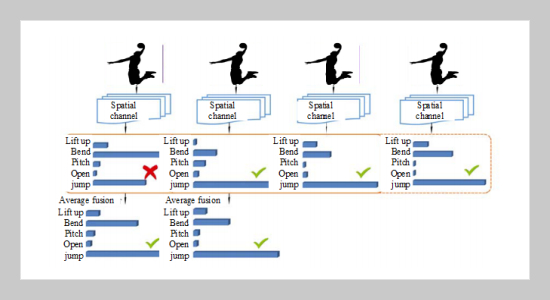REFERENCES
- [1] Jing Yu, Hang Li, Shou-Lin Yin, Qingwu Shi, and Shahid Karim. Dynamic Gesture Recognition Based on Deep Learning in Human-to-Computer Interfaces. Journal of Applied Science and Engineering, 23(1):31–38, 2020.
- [2] P Li, Z Chen, LT Yang, Q Zhang IEEE Transactions on . . . , and Undefined 2017. Deep convolutional computation model for feature learning on big data in internet of things. Future Generation Computer Systems, 99:508–516, 2019.
- [3] Qingchen Zhang, Changchuan Bai, Laurence T. Yang, Zhikui Chen, Peng Li, and Hang Yu. A Unified Smart Chinese Medicine Framework for Healthcare and Medical Services. IEEE/ACM Transactions on Computational Biology and Bioinformatics, pages 1–1, 2019.
- [4] Xiaowei Wang, Shoulin Yin, Ke Sun, Hang Li, Jie Liu, and Shahid Karim. GKFC-CNN: Modified Gaussian Kernel Fuzzy C-means and Convolutional Neural Network for Apple Segmentation and Recognition. Journal of Applied Science and Engineering, 23(3):555–561, 2020.
- [5] Shoulin Yin, Hang Li, Lin Teng, Man Jiang, and Shahid Karim. An optimised multi-scale fusion method for airport detection in large-scale optical remote sensing images. International Journal of Image and Data Fusion, 11(2):201–214, apr 2020.
- [6] Lin Teng, Hang Li, Shoulin Yin, Shahid Karim, and Yang Sun. An active contour model based on hybrid energy and fisher criterion for image segmentation, jan 2020.
- [7] X Gong, S Zhu IEEE Access, and Undefined 2019. Person Re-Identification Based on Two-Stream Network With Attention and Pose Features. IEEE Access, 7:131374–131382, 2019.
- [8] X Chen, H Yang, J Yu, W Yue, and Y Xie 2018 Chinese Automation. A Feature Extraction Strategy of Fire Hole Video Based on VGG16 and Migration Learning. Proceedings 2018 Chinese Automation Congress, CAC 2018, pages 2715–2720, 2019.
- [9] Limin Wang, Yuanjun Xiong, Zhe Wang, Yu Qiao, Dahua Lin, Xiaoou Tang, and Luc Van Gool. Temporal Segment Networks for Action Recognition in Videos. Technical report, 2019.
- [10] Yongchen Wang, Ying Wang, Huawei Li, Cong Shi, and Xiaowei Li. Systolic cube: A spatial 3D CNN accelerator architecture for low power video analysis. In Proceedings - Design Automation Conference. Institute of Electrical and Electronics Engineers Inc., jun 2019.
- [11] Xuebin Zheng, Bingxin Zhou, Ming Li, Yu Guang Wang, and Junbin Gao. Graph Neural Networks with Haar Transform-Based Convolution and Pooling: A Complete Guide. IEEE TRANSACTIONS ON NEURAL NETWORKS AND LEARNING SYSTEMS, XX, jul 2020.
- [12] Sijie Yan, Yuanjun Xiong, and Dahua Lin. Spatial temporal graph convolutional networks for skeleton-based action recognition. In 32nd AAAI Conference on Artificial Intelligence, AAAI 2018, pages 7444–7452. AAAI press, 2018.
- [13] L Teng, H Li, S Yin International Journal of Communication, and Undefined 2018. Modified pyramid dual tree direction filter-based image denoising via curvature scale and nonlocal mean multigrade remnant filter. International Journal of Communication Systems, 31(16), nov 2017.
- [14] S Yin, Y Zhang, S Karim IEEE Access, and Undefined 2018. Large scale remote sensing image segmentation based on fuzzy region competition and Gaussian mixture model. IEEE Access, 6:26069–26080, 2018.
- [15] Qingchen Zhang, Changchuan Bai, Zhikui Chen, Peng Li, Hang Yu, Shuo Wang, and He Gao. Deep learning models for diagnosing spleen and stomach diseases in smart Chinese medicine with cloud computing. Concurrency and Computation: Practice and Experience, page e5252, apr 2019.
- [16] Md A.R. Ahad. Motion history image. In SpringerBriefs in Computer Science, number 9781447147299, pages 31– 76. Springer, 2013.
- [17] SF Chevtchenko, RF Vale, V Macario Applied Soft Computing, and Undefined 2018. A convolutional neural network with feature fusion for real-time hand posture recognition. Applied Soft Computing Journal, 73:748–766, 2018.









